Towards the end of WWI, the French reached first place in the heavy tank development race. A little longer, and the FCM 2C would have seen combat. The French created the first breakthrough tank in the world, which combined powerful armament with armour that, at the time, could be considered shellproof. In addition, the French vehicle became the first multiturreted tank in the world, and its main turret was large enough for three men.
In Britain, the runner up trendsetter, took a different path in the creation of heavy tanks: improvement of the tried and true 'rhombus' design. It was soon obvious that this path led to a dead end. The next British heavy tank, the A1E1 Independent, gained not just a turret, but five of them.
Five headed dragon
The civil war that engulfed the former Russian empire was a harbinger of war to come. Tanks were used very sparingly, but the few battles they fought were enough to make some conclusions.
Tanks were used in the classical fashion, to break though a line of fortifications, just once during the whole war, during an assault on Tsaritsin (modern day Volgograd). In every other respect, tanks were inferior to armoured cars, which were used much more widely by the warring factions. The nature of the war demanded high mobility, which tanks of the time could not provide.
There were also some complaints about the mobility of fire. Armament placed in sponsons severely limited the gun's traverse. This was not so important in cases of massed attacks, but lone tanks were often captured by infantry.
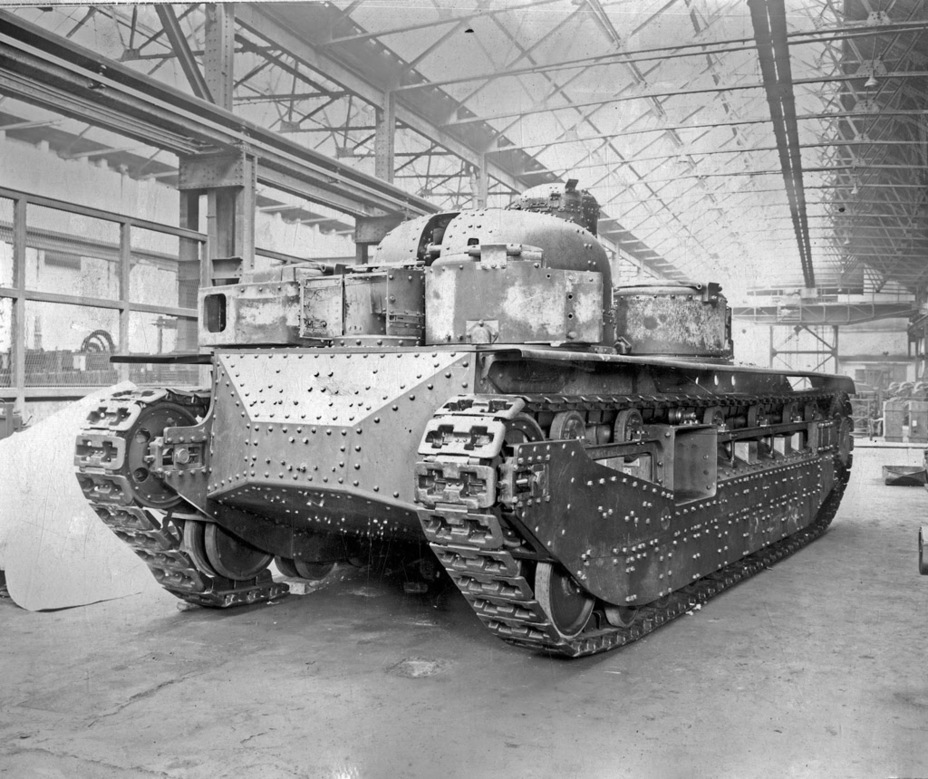
It's hard to tell how much combat in Russia affected further developments, but one thing is certain: the 'rhombus' fell out of favour in Britain by the 1920s. The time of hundreds of tanks advancing along a moon-like landscape was over. The army needed new tanks, which were significantly more maneuverable.
The first requirements for a new heavy tank, dated 1922, showed that the British weren't looking for shortcuts on the way to the next generation. According to the requirements, the military wanted a lower tank, but still one without a turret. The main gun was a 3-pounder (47 mm) in the front of the hull. Sponsons with machineguns lined the sides. The engine would be in the rear. The tank had to be able to cross a 2.8 meter wide trench. Largely, this was the same «rhombus», but with a cannon in the front.
Vickers was the only developer of the new tank. The Vickers Infantry Tank No.1 had just entered trials, and was equipped with a novelty: a rotating turret. This tank was only armed with machineguns, but the Vickers Infantry Tank No.2 had a 3-pounder cannon in the turret.
It's not hard to guess that the mobility of fire increased with the addition of a turret. Vickers also understood this, and designed an alternative alongside the vehicle with a hull gun. In March of 1923, the British War Ministry was shown a draft project that was almost completely at odds with the initial requirements. Only the armament and the rear engine matched up. The mention of the Vickers Infantry Tank was not an accident, as the turret was largely copied from that tank. The number of machineguns used by this tank increased to four, but they were housed in small one-man turrets instead of sponsons.
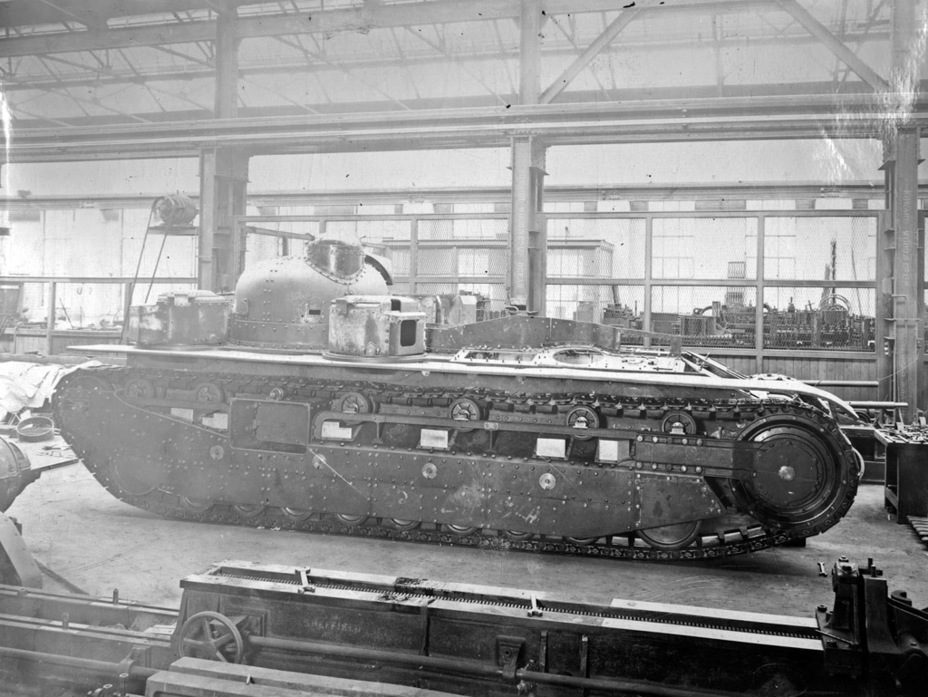
Sir George Thomas Beckham, Vickers' chief engineer, lobbied for this multiturreted design. He found allies in the Royal Tank Corps. As a result, the initial concept of a low and long tank was discarded.
Meanwhile, the Vickers Infantry Tanks No.1 and No.2 turned out to be failed experiments, and they were replaced with other vehicles. The Light Tank Mk.I, which was quickly renamed to Medium Tank Mk.I, came out in late 1922. In 1925, the improved Medium Tank Mk.II entered production. The experimental Birch Gun SPG was also built in 1924. All of these vehicles affected the development of the heavy tank, indexed A1E1. By May of 1925, when Vickers finished building the model, the vehicle looked very different.
Land battleship
The design of the A1E1, which received the name Independent, was finalized in 1926. Unlike the Medium Tanks Mk.I and Mk.II, which were built at the Royal Arsenal in Woolwich, the experimental prototype was built at the Vickers factory in Sheffield. Assembly was complete in September of 1926. It cost the War Ministry a fantastic sum for the time: 77,500 pounds Sterling. To compare, a single Medium Tank Mk.II cost 8,500 pounds.
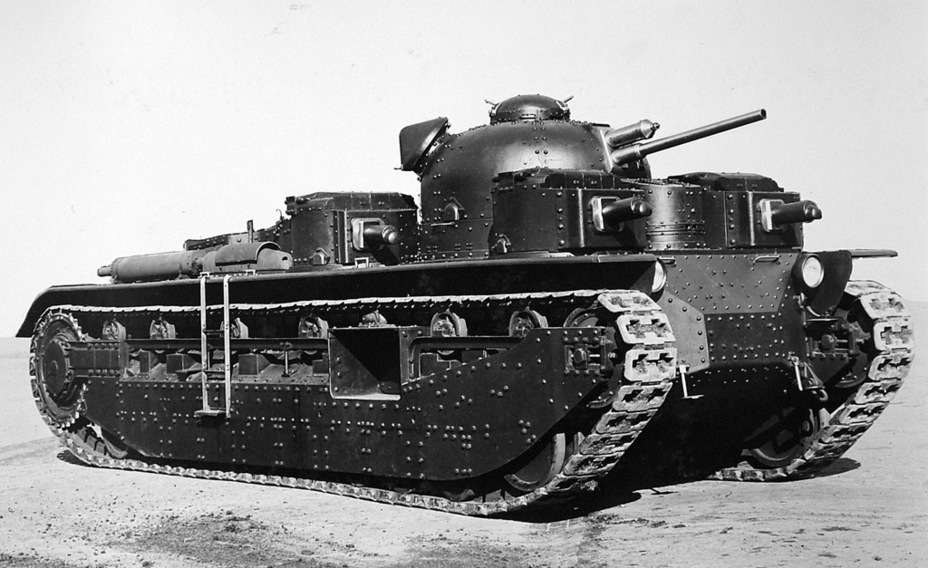
Let us explain why the British needed such an expensive tank. Fierce debates rage on about the value of this tank. Some insist that, for instance, it was going to be equipped with a 75 mm gun, and so on. In order to understand the need for the A1E1, one must look at how the British viewed their mechanized forces.
Two-man tankettes, armed with a single machinegun, would make up most of the force. Their job was to fight enemy infantry. Light (medium) tanks, armed with cannons and machineguns, were one level up. In addition to fighting infantry, they would also destroy enemy tanks. The 3-pounder gun, especially the version with a lengthened barrel, was sufficient for this task. This gun had no high explosive rounds.
Finally, breakthrough tanks, or «battle tanks», were at the very top of the pyramid. The A1E1 belonged to this class. These vehicles were also equipped with cannons and machineguns, but also had thick armour, which protected them from anti-tank guns in addition to machineguns. The thickness of the Independent's armour reached 28 mm, slightly more than that of the Renault NC. At the time, this was enough armour to offer reliable protection from small caliber artillery.
As for these rumours about a 75 mm gun, one must remember that the British army had no gun with this caliber. Just like the light/medium tanks, the British heavy tank used its cannon only to fight enemy tanks. This tank, equipped with thick armour, would burst into the center of enemy defenses, and shower their trenches with fire from its small turrets. Thanks to its long hull, it would easily be able to cross trenches and ditches, clearing the way for smaller tanks. Despite its large mass, it had to be as maneuverable as medium vehicles.
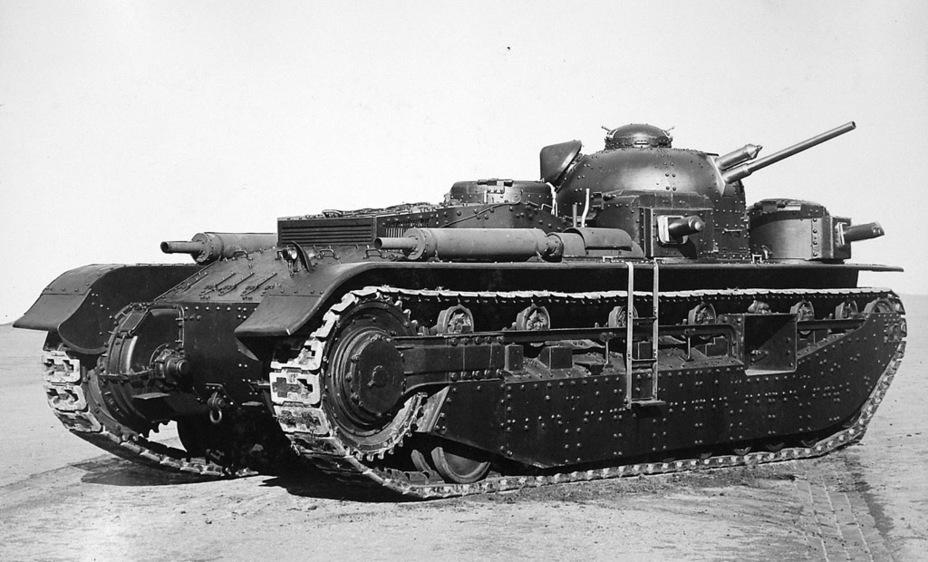
Vickers built a «land battleship» to meet these requirements. The running gear was very similar to the one used on the Medium Tanks Mk.I and Mk.II, although it was mostly true for the suspension elements, idler, and drive sprocket. 8 road wheels, coupled into 4 bogeys, were attached to each side. Each side also had a massive idler and drive sprocket. They were positioned just off the ground. Their job was to absorb impacts when the tank hit a vertical obstacle.
Removable skirts were added to protect the suspension and road wheels. Entry hatches, positioned in between suspension elements, were a distinctive characteristic of this vehicle. Tankers used these hatches very infrequently, since they did not tend to be particularly clean.
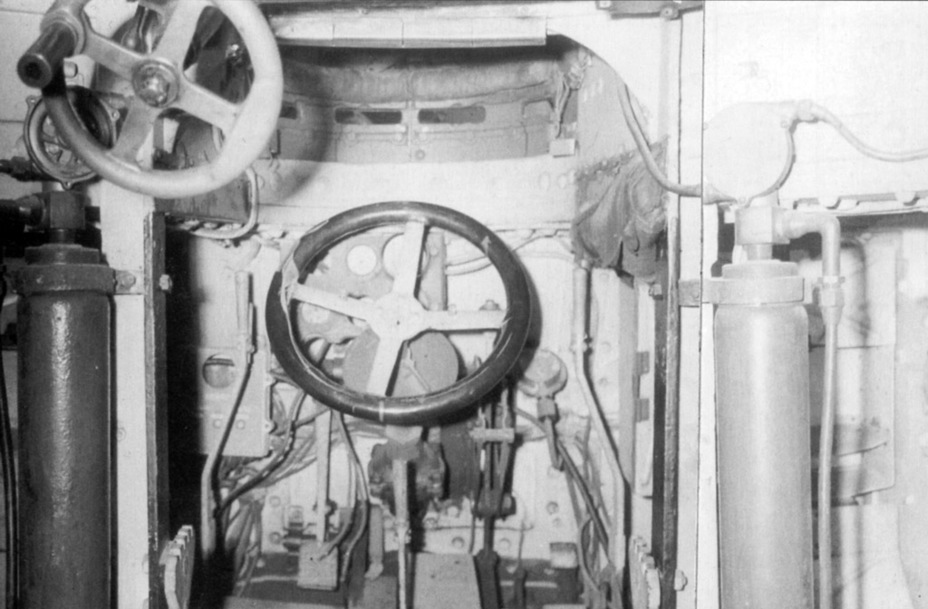
The driver's work conditions were completely different from those of previous British heavy tanks. Compared to the «rhombus» tanks, this was like a spaceship. The designers tried their hardest to ease the driver's job, and make his conditions more comfortable. First, the crewman sat alone, with no one to interfere. A bulge was added to the front of the hull to house him comfortably. Thanks to a special observation cupola, he had satisfactory visibility.
That was not all. An invention of Walter Gordon Wilson, one of the creators of the first tanks, was implemented in this vehicle. This was a planetary transmission, developed back in 1919. The A1E1 was the first tank that used such a transmission. In addition to traditional levers, the driver received a steering wheel, which was used when making gradual turns. Servos also eased the driver's job.
The hull was assembled using rivets, which was traditional for the time. The fighting compartment was protected with 28 mm of armour. In other places, the armour was between 8 and 13 mm thick.
The engine compartment took up half of the length of the hull. Armstrong-Siddeley developed a special V-shaped 12-cylinder 350 hp engine just for this tank. Thanks to this, the power to weight ratio of the A1E1 was over 10 hp/ton. The tank was equipped with a Swiss Winterthur gearbox (modern day RENK-MAAG).
The A1E1 might appear long, but its length was only 7770 mm, less than the famous 'rhombus' Mark V tank.
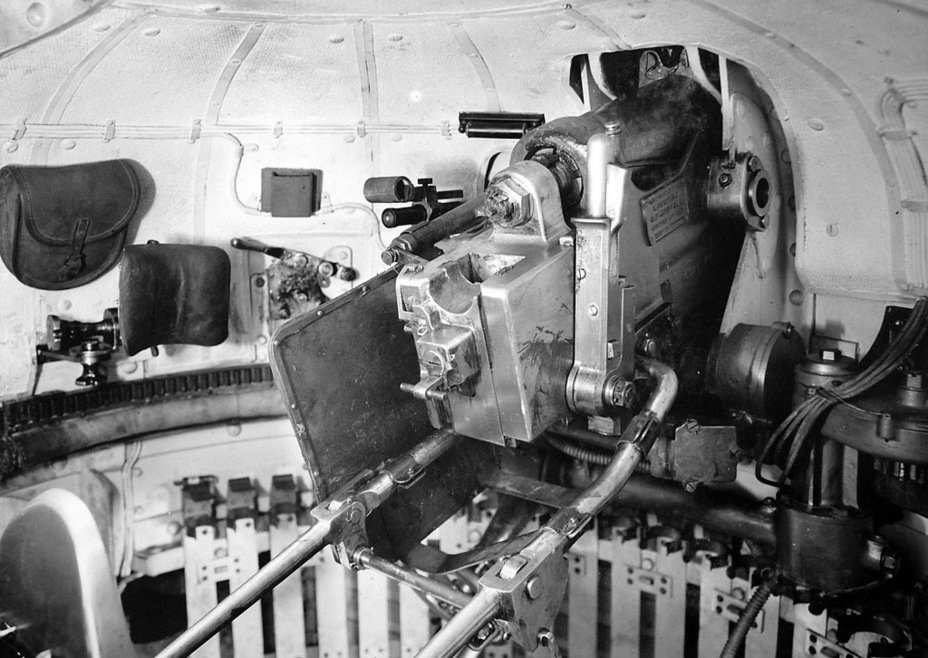
The main turret of the A1E1, unlike the hull, was much more conservative. As mentioned above, the Vickers Infantry Tank No.2 turret was used as inspiration. The machinegun was removed, which was a little surprising, as the 3-pounder cannon was only meant to fire at enemy tanks. The turret housed three crewmen, and the commander received a special cupola, shifted to the left. A powerful fan, covered by an armoured cap, was located to his right. Like on the Vickers Infantry Tank No.2, the turret was composed of six 'slices', with a curved roof attached on top. From the inside, the turret and the fighting compartment were lined with asbestos.
Another novelty used in the British heavy tank was the use of throat microphones for crew communication.
Money devourer
The final assembly of the A1E1 Independent was finished in October of 1926. On November 13th, the tank was first seen by journalists. The tank participated in a demonstration of the achievements of the British military industry, organized for governments of British dominions. The result was certainly impressive. The heavy multiturreted tank drove on, surrounded by tankettes, much like a battleship surrounded by destroyers.
However, the performance arranged at Camberley concealed serious defects. On one hand, the 29 ton tank showed decent mobility. Its top speed was 32 kph, which was more than the Medium Tank Mk.II could achieve. On the other hand, there was a large price to pay. The 12-cylinder engine was ravenous, and consume almost 2.4 L of fuel for one kilometer of driving. The oil expenditure was also stunning: 10.5 L per engine hour! Small design defects also kept popping up, which had to be corrected.
For starters, support rollers with rubber rims were discarded, and replaced with fully metallic designs. Issues with brake ribbons were solved by using ribbons with a liner made from Ferodo Ltd.'s friction material, widely known as simply 'ferodo'. In 1928, Wilson designed an improved transmission, which was also installed into the tank. Constant modifications increased the tank's mas to 32.5 tons by 1929.
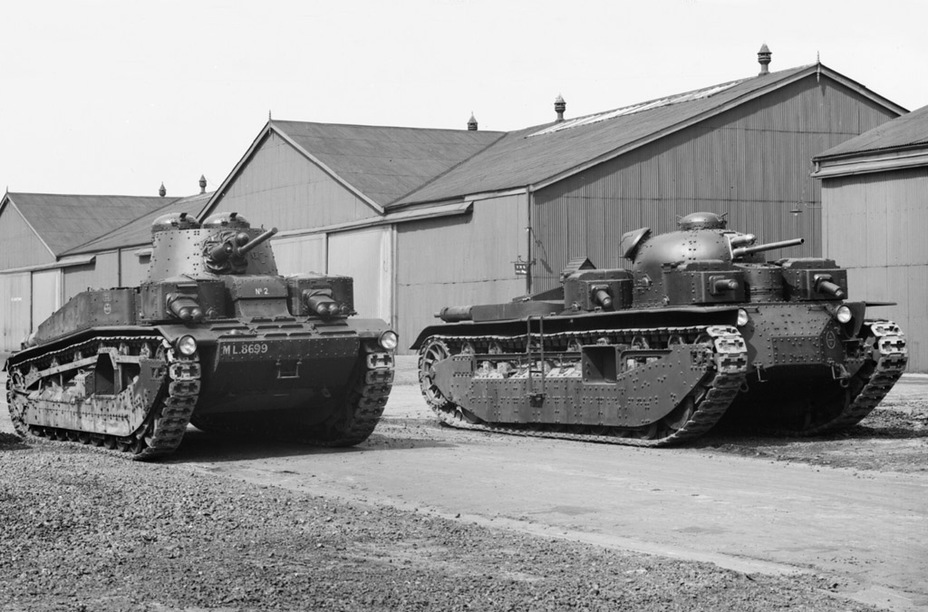
Meanwhile, the tank had a serious issue that could not be solved. The long hull caused a number of issues. This was not a significant drawback on ordinary roads and flat terrain, but issues cropped up when the tank tried to cross an incline or a wide trench. Suddenly, the tank was lacking engine power, even though the power to weight ratio stayed above 10 hp/ton. The commander could also not command more than one turret, which reduced the tank's effectiveness in battle.
Despite the obvious issues with offroad driving, the British War Ministry kept trying to improve the tank. Its characteristics remained serviceable even in the early 1930s. In addition, too much money was sunk into both the tank itself, and its modernization.
This circus continued until 1935, when it became clear that there was no longer a point in putting any more resources into the Independent. By that point, the A1E1 consumed another 150,000 pounds Sterling, or twice its original price. In total, the tank cost as much as dozens of Medium Tanks Mk.II, while its value on the battlefield was about equal to one medium tank.
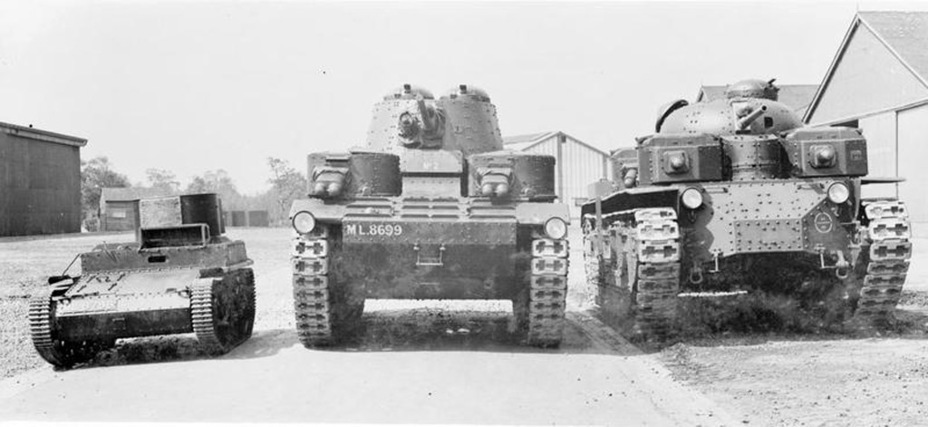
This Leviathan was too expensive to send to the scrap heap. The A1E1 was delivered to the training facility at Bovington. The tank remained a monument to itself until 1940, when it was returned to service. The British lost a large amount of tanks in France, and every tank was valuable. Because of this, the A1E1 Independent returned to active duty. The tank was placed at a crossroads near Bovington, acting as a mobile bunker. Since the Germans never landed in Britain, it resumed its role as an exhibit.
The only A1E1 prototype survived the war, and can now be seen in the Bovington Tank Museum. The vehicle is well preserved, but there is no talk of a restoration, at least not yet.
Despite such a sad ending, the A1E1 Independent was not a complete failure. At the very least, it was the only heavy tank design of the 1920s to be built in metal. In addition, it was the first true multiturreted tank, which triggered a whole generation of armoured vehicles worldwide. The ideas implemented in the A1E1 can be seen in other tanks, including the Soviet T-35. One often hears that the T-35 was a copy of the Independent, but that is not the case. Only the overall concept was inspired, and even then, with many differences.
The Independent had many other technical solutions that were later used in other tanks. This is especially true of the planetary transmission and the layout of the driver's station. The five-turreted tank left a mark on tank design worldwide.
Translated by Peter Samsonov. Read more interesting tank articles on his blog Tank Archives.
Sources:
- Author's photo archive;
- http://tankdevelopment.blogspot.ru;
- Tank A1E1, Independent, Tankette 45–4;
- http://www.tankmuseum.org.







